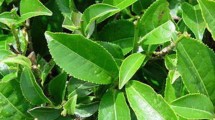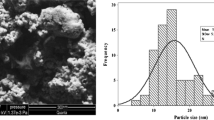Abstract
Background
Silver nanoparticles (AgNPs) have various industrial applications; however, when released into wastewater, AgNPs have significant effects on aquatic ecosystems.
Objective
Silver nanowaste materials in aquatic ecosystems could be conjugated and removed using jellyfish immune reaction extract (JEIs). In this study, we investigate the biological effects of JEIs and JEIs with silver nanoparticles (AgNPs) on zebrafish embryogenesis and aquatic bacteria. JEIs were extracted using two methods, a previously established method (AJEI) and the new JEI extraction method (BJEI).
Results
BJEI bound 96.64% (2 mg/L) of nano-Ag-citrate (AgN-Citrate) and 96.17% of nano-Ag-polyvinyl-pyrrolidone (AgN-PVP) 1 h following exposure, and significantly reduced the toxic effect of AgNPs on zebrafish embryos to a greater extent than AJEI, extracted using the previous method. However, upon exposure to BJEI, the number of viable aquatic bacteria was reduced owing to the antibacterial effects of JEI.
Conclusion
JEIs captured Ag-citrate NPs and AgN-PVP and reduced their nano-toxicity. The BJEI extraction method resulted in lower toxicity for zebrafish embryogenesis, as copmared to that with AJEI. JEI has antibacterial effects; however, information on the specific targets of the antibacterial materials is scarce. JEI did not accumulate or persist since it is a reaction material from the jellyfish and degraded in aquatic environments. Therefore, BJEI can be a promising material for removing AgNPs from aquatic ecosystems.






Similar content being viewed by others
Change history
28 January 2022
A Correction to this paper has been published: https://doi.org/10.1007/s13273-022-00222-4
References
Antony JJ, Sivalingam P, Chen B (2015) Toxicological effects of silver nanoparticles. Environ Toxicol Pharmacol 40:729–732
Babu M et al (2014) Application of biosynthesized silver nanoparticles in agricultural and marine pest control. Curr Nanosci 10:374–381
Bosch TCG (2012) Understanding complex host-microbe interactions in Hydra. Gut Microbes 3:345–351
Brar SK, Verma M, Tyagi RD, Surampalli RY (2010) Engineered nanoparticles in wastewater and wastewater sludge—evidence and impacts. Waste Manag 30:504–520
Choi JE et al (2010) Induction of oxidative stress and apoptosis by silver nanoparticles in the liver of adult zebrafish. Aquat Toxicol 100:151–159
D’Amico L, Scott IC, Jungblut B, Stainier DYR (2007) A Mutation in Zebrafish hmgcr1b reveals a role for isoprenoids in vertebrate heart-tube formation. Curr Biol 17:252–259
Degger N, Tse ACK, Wu RSS (2015) Silver nanoparticles disrupt regulation of steroidogenesis in fish ovarian cells. Aquat Toxicol 169:143–151
Fabrega J, Luoma SN, Tyler CR, Galloway TS, Lead JR (2011) Silver nanoparticles: behaviour and effects in the aquatic environment. Environ Int 37:517–531
Gajbhiye S, Sakharwade S (2016) Silver nanoparticles in cosmetics. J Cosmet Dermatol Sci Appl 06:48–53
Gottschalk F, Lassen C, Kjoelholt J, Christensen F, Nowack B (2015) Modeling flows and concentrations of nine engineered nanomaterials in the danish environment. Int J Environ Res Public Health 12:5581–5602
Ha J, Kim E, Lee BG, Yeo M-K (2020) Capture and toxicity assessment of Ag citrate nanoparticles using jellyfish extract. Mol Cell Toxicol 16:431–439
Ip M, Lui SL, Poon VKM, Lung I, Burd A (2006) Antimicrobial activities of silver dressings: an in vitro comparison. J Med Microbiol 55:59–63
Jung WK et al (2008) Antibacterial activity and mechanism of action of the silver ion in Staphylococcus aureus and Escherichia coli. Appl Environ Microbiol 74:2171–2178
Jyoti K, Baunthiyal M, Singh A (2016) Characterization of silver nanoparticles synthesized using Urtica dioica Linn leaves and their synergistic effects with antibiotics. J Radiat Res Appl Sci 9:217–227
Kaegi R et al (2011) Behavior of metallic silver nanoparticles in a pilot wastewater treatment plant. Environ Sci Technol 45:3902–3908
Kim M (1997) Foodwebs and trophie cascade in lake ecosystem. Microbiol Soc Korea 33:66–71
Kim HK, Lee IK (2006) Endoplasmic reticulum (ER) stress and vascular complication. J Korean Diabetes Assoc 30:145
Kim JI, Park H-G, Chang K-H, Nam DH, Yeo M-K (2016) Trophic transfer of nano-TiO2 in a paddy microcosm: a comparison of single-dose versus sequential multi-dose exposures. Environ Pollut 212:316–324
Kim SS, Lee JA, Yeo MK (2019) Reduction in toxicity of nano-Ag-polyvinyl-pyrrolidone using hydra proteins and peptides during zebrafish embryogenesis. Nanomaterials 9:1210
Kimmel CB, Ballard WW, Kimmel SR, Ullmann B, Schilling TF (1995) Stages of embryonic development of the zebrafish. Dev Dyn 203:253–310
Klaine SJ et al (2008) Nanomaterials in the environment: behavior, fate, bioavailability, and effects. Environ Toxicol Chem 27:1825–1851
Larionov A, Krause A, Miller W (2005) A standard curve based method for relative real time PCR data processing. BMC Bioinformatics 6:62
Lee KJ, Browning LM, Nallathamby PD, Osgood CJ, Xu X-HN (2013) Silver nanoparticles induce developmental stage-specific embryonic phenotypes in zebrafish. Nanoscale 5:11625
Lee SJ, Lee M-E, Chung J-W (2014) Comparison of heavy metal adsorption by manganese oxide-coated activated carbon according to manufacture method. J Korean Soc Environ Eng 36:7–12
Lee T-H, Hall KN, Aguilar M-I (2015) Antimicrobial peptide structure and mechanism of action: a focus on the role of membrane structure. Curr Top Med Chem 16:25–39
Lee JA, Yeo M-K, Kim SS (2020) Hydra protein reduces the toxicity of Ag–PVP nanoparticles in a 3D A549 cell line. Mol Cell Toxicol 16:73–81
Li J et al (2018) Xiaoaiping induces developmental toxicity in zebrafish embryos through activation of ER stress, apoptosis and the Wnt pathway. Front Pharmacol 9:1250
Liu W et al (2018) Stress-induced mucus secretion and its composition by a combination of proteomics and metabolomics of the jellyfish Aurelia coerulea. Mar Drugs 16:341
Luksiene Z (2017) Nanoparticles and their potential application as antimicrobials in the food industry. Food preservation. Academic press, London, pp 567–601. https://doi.org/10.1016/B978-0-12-804303-5.00016-X
Martin FD, Drewry GE (1978) Development of fishes of the mid-Atlantic Bight: an atlas of egg, larval and juvenile stages. Fish and Wildlife Service, US Department of the Interior 6
Martin JD, Colson T-LL, Langlois VS, Metcalfe CD (2017) Biomarkers of exposure to nanosilver and silver accumulation in yellow perch (Perca flavescens). Environ Toxicol Chem 36:1211–1220
Moon Y-H, Lee K-B, Kim Y-J, Koo Y-M (2011) Current status of EM (effective microorganisms) utilization. KSBB Journal 26:365–373
Nam D-H, Lee B, Eom I, Kim P, Yeo M-K (2014) Uptake and bioaccumulation of titanium- and silver-nanoparticles in aquatic ecosystems. Mol Cell Toxicol 10:9–17
Nimesh S, Chandra R, Gupta N (2017) Advances in nanomedicine for the delivery of therapeutic nucleic acids. Woodhead Publishing
Osborne OJ et al (2015) Organ-specific and size-dependent ag nanoparticle toxicity in gills and intestines of adult zebrafish. ACS Nano 9:9573–9584
Ovchinnikova TV et al (2006) Aurelin, a novel antimicrobial peptide from jellyfish Aurelia aurita with structural features of defensins and channel-blocking toxins. Biochem Biophys Res Commun 348:514–523
Park H-G, Yeo M-K (2015) Comparison of gene expression patterns from zebrafish embryos between pure silver nanomaterial and mixed silver nanomaterial containing cells of Hydra magnipapillata. Mol Cell Toxicol 11:307–314
Park H-G, Yeo M-K (2017) Toxic effects against bacteria of silver nanocolloids and silver nanotubes in the presence of hydra cells. Mol Cell Toxicol 13:37–47
Park H-G et al (2018) Trophic transfer of citrate, PVP coated silver nanomaterials, and silver ions in a paddy microcosm. Environ Pollut 235:435–445
Patwa A et al (2015) Accumulation of nanoparticles in “jellyfish” mucus: a bio-inspired route to decontamination of nano-waste. Sci Rep 5:11387
Qiang L et al (2020) Silver nanoparticles in zebrafish (Danio rerio) embryos: uptake, growth and molecular responses. Int J Mol Sci 21:1876
Shanks A, Graham W (1988) Chemical defense in a scyphomedusa. Mar Ecol Prog Ser 45:81–86
US EPA (1994) 3051 Method; microwave-assisted acid digestion of sediments, sludges, soils and oils. Technical report, Washington, District of Columbia, pp 1–14
Westerfield M (2007) THE zebrafish book: a guide for the laboratory use of zebrafish danio. University of Oregon Press
Wu Y, Zhou Q (2012) Dose- and time-related changes in aerobic metabolism, chorionic disruption, and oxidative stress in embryonic medaka (Oryzias latipes): underlying mechanisms for silver nanoparticle developmental toxicity. Aquat Toxicol 124–125:238–246
Xu F, Piett C, Farkas S, Qazzaz M, Syed NI (2013) Silver nanoparticles (AgNPs) cause degeneration of cytoskeleton and disrupt synaptic machinery of cultured cortical neurons. Mol Brain 6:29
Acknowledgements
This work was supported by the Basic Science Research Program of the National Research Foundation of Korea (NRF), which is funded by the Ministry of Education (NRF-2019R1A2C1004616). Also, this work was supported by Korea Environment Industry & Technology Institute (KEITI) through Ecological Imitation-based Environmental Pollution Management Technology Development Project, funded by Korea Ministry of Environment (MOE) (2021002800018).
Author information
Authors and Affiliations
Contributions
EK formal analysis (equal); writing-original draft (equal); data curation (equal); Methodology (equal). M-KY conceptualization (equal); funding acquisition (equal); supervision (equal); writing-review and editing (equal). BGL methodology (equal). SWG methodology (equal).
Corresponding author
Ethics declarations
Conflict of interest
The authors declare that they have no competing interest. Author Euna Kim declares that she has no conflict of interest. Author Min-Kyeong Yeo declares that she has no conflict of interest. Author Bong Gu Lee declares that he has no conflict of interest. Author Sun Woo Geum declares that she has no conflict of interest.
Ethical approval
This article does not contain any studies with human participants or animals performed by any of the authors.
Additional information
Publisher’s Note
Springer Nature remains neutral with regard to jurisdictional claims in published maps and institutional affiliations.
The original online version of this article was revised: Due to an unfortunate oversight during the e.proofing, Table 3 has been given erroneously.
Rights and permissions
About this article
Cite this article
Kim, E., Yeo, MK., Lee, B.G. et al. Binding of silver nanowaste using jellyfish immune reaction extract and an assessment of aquatic toxicity. Mol. Cell. Toxicol. 18, 339–348 (2022). https://doi.org/10.1007/s13273-021-00199-6
Accepted:
Published:
Issue Date:
DOI: https://doi.org/10.1007/s13273-021-00199-6




